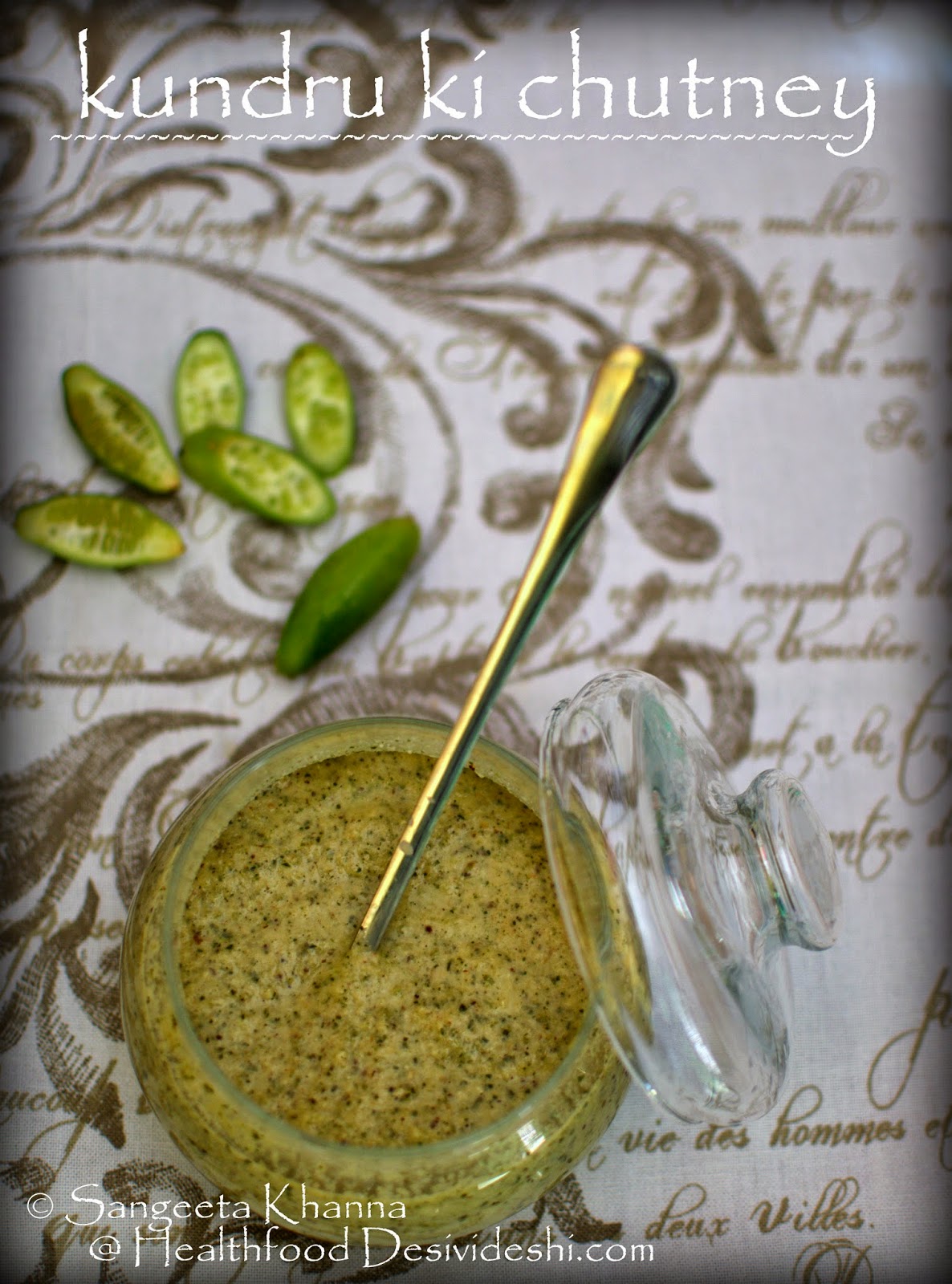Including vegetables in everyday meals comes naturally to many of us as we eat loads of raw salads and stir fry vegetables for every meal of the day. Are you on my side eating loads of vegetables?
Oh no? You hate them? Or don't know how to eat vegetables in every meal?
I do come across many of those people too who are clueless on how to include vegetables in every meal of the day and breakfast is the most difficult meal of the day if they want to have vegetables. Who eats vegetables for breakfast many of them exclaim. I understand as even my husband is one of those people. He is totally a fruits and pancakes person when it comes to breakfast but he occasionally likes these dosa (savoury crepes or pancakes) and chutney for breakfast too. In fact when I make a large bowl of chutney and keep it on the table, he takes second helpings if the chutney is not too hot.
Eating a vegetable based chutney can make you consume about 200 gm vegetables with your breakfast. Just remember to make the chutney really tasty and keep the heat quotient lower than usual if you hate to start your day with spicy hot breakfast.
Ivy gourd or kundru is one such interesting vegetable that has natural tangy taste and responds really well to chutney recipes. And what is more interesting, that kundru can be eaten raw as well. Although I like raw slices of kundru in some tossed salad, I usually half cook the vegetable while making chutney as it enhances the taste and helps balance the flavours.
Ivy gourd (kundru) chutney recipe...
ingredients
(2 large servings)
tender ivy gourds sliced 250 gm
red onion one medium sliced (about 70 gm)
curry patta 20 springs
mustard seeds 1 tsp
chana daal (split chickpeas) 1 tbsp
dry red chilies 2-3 or as per taste
fresh grated coconut 1/4 cup
salt to taste
sesame oil or ghee 2 tsp
tamarind 1 tsp
procedure
Heat oil in a pan and tip in the mustard seeds, red chillies, curry leaves and split chickpeas in that order. Let them sizzle and get aromatic and then add the sliced onions. Caremalise the onions on low flame for about 5 minutes.
Add the ivy gourds (kundru) and salt and cook covered for 2 minutes. Take off the stove and let it cool.
Add the tamarind (paste or extract) and blend in food processor or mixie to make a smooth paste. Serve as desired.
This chutney is great with idli, dosa, chilla and savoury crepes. Even with parathas for breakfast along with some yogurt.
I make another chutney with lobiya (long beans) that has become a favourite. It was made as an experiment one day when I found that the maid had chopped a lot of lobiya and I needed to finish it. I decided to add a lot of ginger to it and it tasted hot gingery when fresh. But I was surprised to know that the chutney taste way better the next day, the flavours more balanced and no strong ginger taste. So if yo are planning to eat the chutney fresh, add a little ginger and if you are planning to eat it the next day as as much ginger as you want. I mean add loads of fresh ginger root and see how the chutney becomes a 'hot' favourite.
Recipe of long beans (lobiya) chutney...
ingredients
(2 large servings)
long beans chopped finely 250 gm or 1.5 cup
chopped onion 60-70 gm or 1/2 cup
cumin seeds 1 tsp
minced ginger 1 tbsp or more
dry red chilly 2-3 or to taste
curry patta 15-20 strings
grated fresh coconut 1/4 cup
sesame oil or ghee 2 tsp
salt to taste
tamarind 2 tsp (paste or dehydrated)
procedure
Heat the oil or ghee in a pan and tip in the cumin seeds, chillies and curry patta and let them fry till fragrant. Add the ginger and then the onions. Let these cook till the onions get pinkish brown.
Add the lobiya (long beans) along with salt and stir fry for 2-3 minutes and then cover and cook on low flame.
Take off the stove, add coconut and tamarind and blend the chutney as desired. You might like a coarse consistency in this one. I like it any which way.
I enjoyed this lobiya chutney with a buckwheat dosa one day along with a dry methi (fenugreek) chutney that I had brought from Pune last year. The dry methi chutney is so good I am hoarding it in my freezer.
I have another lasun chutney from the same place and I love adding that too sometimes to my plate. The other day I made a besan ka chilla with loads of onions and mung sprouts and had with these yummy chutneys.
Sometimes my maid eats her breakfast at my place (whenever she is late) and she tasted one of these mung spout chillas along with the chutneys and was curious to know what was this. After all it doesn't look like any conventional breakfast but she enjoys these and eat slowly relishing each bite. She has been seeing my food pictures and now even gives ideas on using utensils for the same. I find it really sweet :-)
These chutneys helps make friends. My maid took some of the lobiya chutney home and said she shared with her neighbor and got complements.
And, she did not tell what this chutney is made of :-)


















































